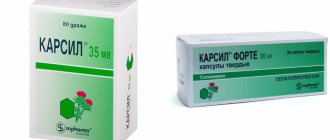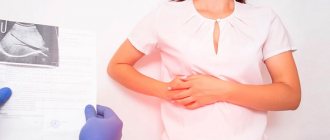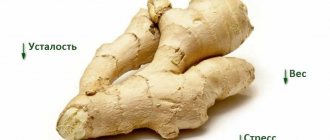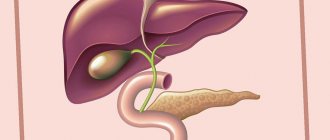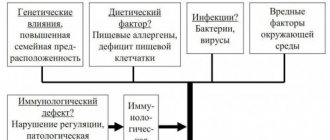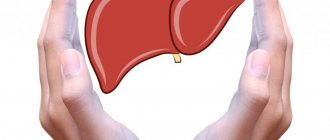Liver dysfunction can manifest itself with clinical signs of varying intensity, depending on the cause of the disease, the condition of the gland and the presence of concomitant diseases. A person may be bothered by rapid fatigue, headache, dyspeptic disorders (heaviness in the gastric zone, belching, bitterness, nausea), insomnia and pain in the right hypochondrium.
Note that pain in the liver zone appears with hepatomegaly (an increase in the volume of the gland), when the organ capsule stretches. Sometimes liver dysfunction is detected accidentally in a laboratory during a routine examination or during diagnosis for another pathology.
Treatment of gland dysfunction should be carried out by a doctor after analyzing the results of a complete examination. First of all, the specialist must establish the etiology (causal factor) of the disease and, if possible, eliminate it. Medication support is a mandatory part of therapy. It includes hepatoprotectors (to protect and restore the functionality of hepatocytes), antispasmodics (to reduce spasms and normalize the outflow of bile), antivirals, interferons (to fight viral infections), vitamins and drugs for detoxification.
Diet for liver disease
An integral part of therapy is a diet for the liver, which should be prepared exclusively by a specialist. It is prescribed for hepatitis of various origins, cirrhosis and cholecystitis. It helps to get rid of heaviness in the right hypochondrium and improve general condition.
Many patients do not believe that a diet for a diseased liver can reduce the severity of symptoms and increase the effectiveness of drug therapy, however, in 50% of cases, regression of clinical signs of the disease is observed after 2-3 weeks. If a person continues to eat fatty foods, drink alcohol, and take hepatotoxic drugs, treatment success may be short-lived or completely absent.
In the chronic course of the disease, a dietary diet can reduce the frequency of exacerbations and prevent the onset of symptoms of the pathology. As for the acute form, proper nutrition makes it possible to completely get rid of the disease and avoid complications, including chronicity of the pathological process.
Basic principles
A diet for the liver involves following the following recommendations:
- split meals throughout the day. The fact is that frequent meals in small quantities allow you to normalize the production and secretion of bile at certain hours. This makes it possible to prevent stagnation, its thickening, and also reduce the risk of stone formation;
- refusal of fried, fatty foods, smoked meats and pickles;
- strict control of salt intake;
- eating warm foods. The digestion process and liver condition are negatively affected by both hot and cold foods;
- enriching the diet with products high in fiber (bran, vegetables);
- preference should be given to cooking methods such as boiling, baking and stewing;
- refusal of rough food that cannot be crushed with teeth to a mushy state. When large pieces of food enter the digestive tract, the digestion process becomes difficult;
- enriching the diet with protein products;
- dairy and meat should be chosen low-fat varieties;
- sour foods are prohibited. This applies to vegetables, fruits, citrus juices and carbonated drinks;
- control over the amount of fat consumed (vegetable oil is allowed). As for lard and lamb, they are prohibited.
To maintain optimal water and electrolyte balance and speed up the removal of toxic substances from the body, you need to drink at least one and a half liters of fluid daily. Preference should be given to green tea, jelly and non-carbonated mineral water. Clean water is especially useful.
Authorized Products
The doctor may include in the prescribed diet foods that must be present in the daily diet:
milk with low fat content;- durum pasta;
- honey and marmalade;
- boiled egg (no more than one daily);
- beef, turkey, rabbit, and chicken fillet;
- dried bread, preferably yesterday's bread, rye;
- only unsweetened cookies, for example, Maria;
- It is allowed to use vegetable oil for dressing;
- compotes and jelly. As for concentrated natural juices, they are prohibited;
- Among the seasonings, you should pay attention to dill, parsley, and bay leaf. Other spices are not recommended;
- You can bake and stew zucchini, pumpkin, carrots, and potatoes.
Among the low-fat species of sea and river inhabitants, it is worth highlighting blue whiting, cod, and pollock.
Prohibited foods
Treatment of liver dysfunction involves reducing the load on the affected organ and protecting hepatocytes. These principles should be taken into account when creating a diet. In this regard, the patient is prohibited from:
- herbs and spices that irritate the liver;
- fatty varieties of fish, meat products and dairy products;
- smoked meats;
- tomatoes in juice or vegetable form;
- sour fruits;
- sorrel;
- carbonated drinks, as they contain a large amount of dyes, synthetic additives and sugar;
- onion garlic;
- persimmon, grapes;
- fresh baked goods, including bread;
- legumes;
- chocolate;
- any cakes;
- mushrooms;
- coffee, strong tea;
- semi-finished products.
Compliance with dietary recommendations will not be superfluous when carrying out a treatment course with hepatotoxic drugs (antibiotics, chemotherapeutic agents), which will reduce the risk of signs of liver damage.
Alcohol is excluded almost completely: a glass of white wine is allowed only once a month.
General nutrition rules
The diet includes a number of rules that must be followed. The menu should be adjusted, foods that worsen the patient’s condition should be removed.
Recommendations for catering:
- It is prohibited to consume chilled foods;
- avoid hot and cold foods, eat only warm foods;
- reduce the amount of carbohydrates;
- the temperature of the drinks should be 35-40°C
- organize five meals a day;
- If possible, reduce the amount of salt consumed, the permissible amount is 7 g per day;
- increase the amount of vegetables in the menu;
- you can’t eat fried food;
- do not eat anything fatty;
- Smoked and pickled products are not allowed.
It is important to prepare foods correctly and not to eat fried foods, which are harmful to the patient’s condition.
Useful menu
At the initial stage of treatment, when the patient is unusual in limiting his diet, a lot of effort is required from him to comply with medical recommendations on the diet. Gradually he gets used to the diet, and the dishes become less disgusting than at the beginning of treatment.
Over time, cooking meals will take less time, and a feeling of lightness will appear throughout the body, because this diet helps improve digestion.
Considering the considerable list of permitted products, you can prepare quite a lot of interesting dishes. A nutritious diet should contain a variety of dishes with a maximum content of vitamins and strict adherence to calorie content.
Here is a sample menu layout. The official mirror of the SpinWin casino is https://spinwin.name/. Don't miss your chance - register on the site and play for real money!
| Breakfast | Lunch | Dinner | Dinner | |
| Monday | Rice porridge with milk, butter (no more than 5 g), green tea without sweeteners | Casserole with permitted fruits and cottage cheese | Vegetable soup, chicken cutlets, compote, stewed carrots | Macaroni with butter and cheese dressing |
| Tuesday | Buckwheat, turkey cutlets, tea | Baked apples, carrot puree | Milk soup, curd pudding, 30 g sour cream | Semolina with butter |
| Wednesday | Pasta with beef and butter | Potato dumplings, sour cream | Stuffed cabbage rolls, vegetable soup, jelly | Milk rice porridge, cheese |
| Thursday | Oatmeal with fruit and cheese, tea | Baked apples with rice or cottage cheese | Chicken fillet, vegetable soup, rice porridge | Fish cutlets, mashed potatoes |
| Friday | Rice with butter, lightly pickled herring | Baked apples | Cereal soup, steamed meat, pasta | Cottage cheese with sour cream (maximum 30 g), protein omelet |
| Saturday | Vegetable salad with vegetable oil, as well as steamed cutlets | Baked apples | Vinaigrette, chicken soup, boiled fish | Buckwheat and cottage cheese cereals |
| Sunday | Buckwheat, cutlets, tea | Oven fruits | Borsch, pasta with butter, beef cutlets, jelly | Mashed potatoes, fish, vegetable salad |
For an afternoon snack, we recommend rosehip infusion, unsweetened tea, baked fruit, Maria cookies and berry jelly. For the second dinner, 100 ml of fermented baked milk, yoghurt or kefir is suitable. If desired, you can add 5 ml of honey.
Fully or partially limited products
- Meat and fish broths.
- Products with preservatives, flavoring additives, canned food, instant soups, freeze-dried foods, confectionery products with a long shelf life.
- Products high in oxalic acid and essential oils (radish, garlic, radish, onion, spinach, sorrel).
- Fatty meats and fish, chicken skin, goose and duck meat, loin, sausages, salted fish, smoked meats, fish caviar, bacon, brisket, balyk, seafood, crabs, crayfish, horseradish, mayonnaise, ketchup, pepper, mustard.
- Offal (liver, kidneys, brains), cooking fats and lard.
- Hard-boiled and fried eggs.
- Legumes and vegetables with coarse fiber (radish, turnip, radish, white cabbage).
- Full-fat milk and cream, pastries, puff pastry, cakes, fried pies, baked goods.
- Sour berries and fruits (cranberries, red currants, black currants, green apples).
- Coffee, chocolate, cocoa.
Limited to:
- Fat cottage cheese, curd cheeses, fermented baked milk, yogurt.
- Tomatoes, sour sauerkraut.
Table of prohibited products
| Proteins, g | Fats, g | Carbohydrates, g | Calories, kcal | |
Vegetables and greens | ||||
| canned vegetables | 1,5 | 0,2 | 5,5 | 30 |
| eggplant | 1,2 | 0,1 | 4,5 | 24 |
| swede | 1,2 | 0,1 | 7,7 | 37 |
| peas | 6,0 | 0,0 | 9,0 | 60 |
| bulb onions | 1,4 | 0,0 | 10,4 | 41 |
| chickpeas | 19,0 | 6,0 | 61,0 | 364 |
| cucumbers | 0,8 | 0,1 | 2,8 | 15 |
| salad pepper | 1,3 | 0,0 | 5,3 | 27 |
| parsley | 3,7 | 0,4 | 7,6 | 47 |
| radish | 1,2 | 0,1 | 3,4 | 19 |
| white radish | 1,4 | 0,0 | 4,1 | 21 |
| iceberg lettuce | 0,9 | 0,1 | 1,8 | 14 |
| tomatoes | 0,6 | 0,2 | 4,2 | 20 |
| dill | 2,5 | 0,5 | 6,3 | 38 |
| beans | 7,8 | 0,5 | 21,5 | 123 |
| horseradish | 3,2 | 0,4 | 10,5 | 56 |
| spinach | 2,9 | 0,3 | 2,0 | 22 |
| sorrel | 1,5 | 0,3 | 2,9 | 19 |
Berries | ||||
| grape | 0,6 | 0,2 | 16,8 | 65 |
Mushrooms | ||||
| mushrooms | 3,5 | 2,0 | 2,5 | 30 |
| marinated mushrooms | 2,2 | 0,4 | 0,0 | 20 |
Nuts and dried fruits | ||||
| nuts | 15,0 | 40,0 | 20,0 | 500 |
| peanut | 26,3 | 45,2 | 9,9 | 551 |
| seeds | 22,6 | 49,4 | 4,1 | 567 |
Cereals and porridges | ||||
| millet cereal | 11,5 | 3,3 | 69,3 | 348 |
Flour and pasta | ||||
| dumplings | 11,9 | 12,4 | 29,0 | 275 |
Bakery products | ||||
| buns | 7,9 | 9,4 | 55,5 | 339 |
| Rye bread | 6,6 | 1,2 | 34,2 | 165 |
Confectionery | ||||
| pastry cream | 0,2 | 26,0 | 16,5 | 300 |
| shortbread dough | 6,5 | 21,6 | 49,9 | 403 |
Ice cream | ||||
| ice cream | 3,7 | 6,9 | 22,1 | 189 |
Chocolate | ||||
| chocolate | 5,4 | 35,3 | 56,5 | 544 |
Raw materials and seasonings | ||||
| mustard | 5,7 | 6,4 | 22,0 | 162 |
| mayonnaise | 2,4 | 67,0 | 3,9 | 627 |
Dairy | ||||
| milk 4.5% | 3,1 | 4,5 | 4,7 | 72 |
| cream 35% (fat) | 2,5 | 35,0 | 3,0 | 337 |
| whipped cream | 3,2 | 22,2 | 12,5 | 257 |
| sour cream 30% | 2,4 | 30,0 | 3,1 | 294 |
Cheeses and cottage cheese | ||||
| parmesan cheese | 33,0 | 28,0 | 0,0 | 392 |
Meat products | ||||
| fatty pork | 11,4 | 49,3 | 0,0 | 489 |
| salo | 2,4 | 89,0 | 0,0 | 797 |
| bacon | 23,0 | 45,0 | 0,0 | 500 |
Sausages | ||||
| smoked sausage | 9,9 | 63,2 | 0,3 | 608 |
Bird | ||||
| smoked chicken | 27,5 | 8,2 | 0,0 | 184 |
| duck | 16,5 | 61,2 | 0,0 | 346 |
| smoked duck | 19,0 | 28,4 | 0,0 | 337 |
| goose | 16,1 | 33,3 | 0,0 | 364 |
Fish and seafood | ||||
| smoked fish | 26,8 | 9,9 | 0,0 | 196 |
| black caviar | 28,0 | 9,7 | 0,0 | 203 |
| salmon caviar granular | 32,0 | 15,0 | 0,0 | 263 |
| salmon | 19,8 | 6,3 | 0,0 | 142 |
| canned fish | 17,5 | 2,0 | 0,0 | 88 |
| salmon | 21,6 | 6,0 | — | 140 |
| trout | 19,2 | 2,1 | — | 97 |
Oils and fats | ||||
| animal fat | 0,0 | 99,7 | 0,0 | 897 |
| cooking fat | 0,0 | 99,7 | 0,0 | 897 |
Alcoholic drinks | ||||
| dry red wine | 0,2 | 0,0 | 0,3 | 68 |
| vodka | 0,0 | 0,0 | 0,1 | 235 |
| beer | 0,3 | 0,0 | 4,6 | 42 |
Non-alcoholic drinks | ||||
| soda water | 0,0 | 0,0 | 0,0 | — |
| cola | 0,0 | 0,0 | 10,4 | 42 |
| instant coffee dry | 15,0 | 3,5 | 0,0 | 94 |
| sprite | 0,1 | 0,0 | 7,0 | 29 |
| * data is per 100 g of product | ||||
Oats for the liver
For a long time, oats have been used in the treatment of many diseases, including liver pathology. It is used to cleanse the organ of toxic substances. For preventive purposes, it can be added to the diet, thereby supporting the physiological functions of the gland. For liver diseases, oats:
- increases the vitality of the body;
- cleanses the bloodstream;
- improves visual acuity;
- reduces the risk of thrombosis;
- normalizes the functioning of the entire hepatobiliary system (liver, biliary tract);
It is especially important to consume oats after a course of chemotherapy for cancer of the liver or other organ. Oats are not recommended in the presence of ulcerative defects in the mucous membrane of the digestive tract, as well as in case of cholelithiasis. The fact is that excess fiber can provoke the release of a large volume of bile and the movement of stones along the bile ducts. Restrictions also apply to children under 12 years of age.
Before preparing an oat-based dish, it is recommended to check it for the presence of chemical additives. To do this, you need to pour water over the cereal, after which the bad oats will float. If the grains have previously undergone chemical treatment, the water may acquire some color.
7-10: Fruit
The key difference between fruits and vegetables is their high fructose content. It is more beneficial than traditional glucose and creates less stress on the liver. That is why nutritionists recommend that everyone give preference to fresh and dried fruits instead of ordinary desserts. The best fruits for the liver are lemons, apples, plums and bananas.
Lemon
Lemon is rich in ascorbic acid (vitamin C), which prevents fatty hepatosis, has a supporting effect on the liver, and also enhances the body's immune response.
Doctors assure that regular consumption of lemon in reasonable quantities significantly reduces the risk of contracting “household” hepatitis. Ascorbic acid also stimulates the flow of bile.
On forums you can often find statements that lemon can be used to cleanse the liver. Doctors say that consuming it in large quantities can harm the gallbladder and also cause gastritis. It should not be abused.
Apples
Apples are rich in iron and ascorbic acid and accelerate the removal of lipid compounds, which helps prevent fatty hepatosis. Regular consumption of apples has a positive effect on the blood composition and also reduces the level of low-density cholesterol, which comprehensively improves the health of the liver.
Doctors recommend including apples in the diet when it is necessary to minimize the load on the organ. Moreover, it is advisable to consume this fruit in baked form (you can with honey if you need to increase the amount of carbohydrates in your diet).
See 5 more medicinal properties of apples here →
Plums
They contain pectins, which strengthen the structure of hepatocyte membranes. Plums also have a good effect on the functioning of the intestines, stimulating the removal of waste and toxins from it, which will help “unload” the liver.
This fruit is also recommended to be included in the diet of those who need to normalize the water-salt balance in the body.
Prunes are more beneficial for the liver - they also have a mild choleretic effect. But at the same time, it weakens and liquefies the stool - this “side” effect should be taken into account.
13 more facts about the effects of plums on the gastrointestinal tract →
Bananas
Bananas are the largest source of simple carbohydrates, which are quickly broken down into derivatives and converted into energy. In this case, there is practically no load on the liver.
Bananas also contain amino acids that are necessary for the formation of new hepatocytes.
In large quantities, bananas have a powerful choleretic effect, so you should not abuse them for stomach ulcers or gastritis.
Find 12 other beneficial properties of bananas here →
